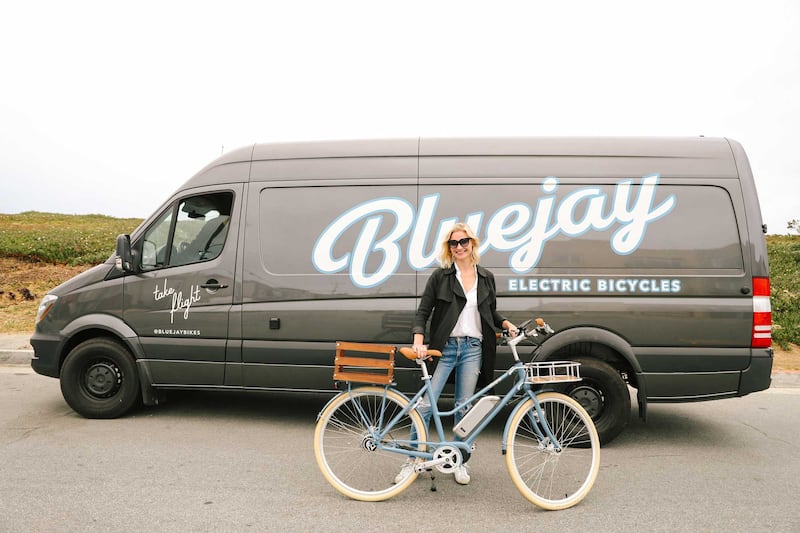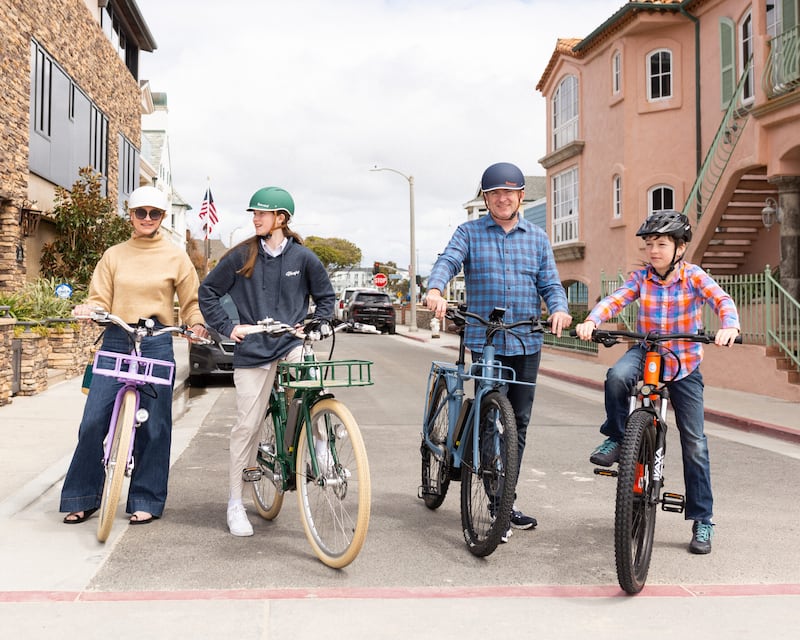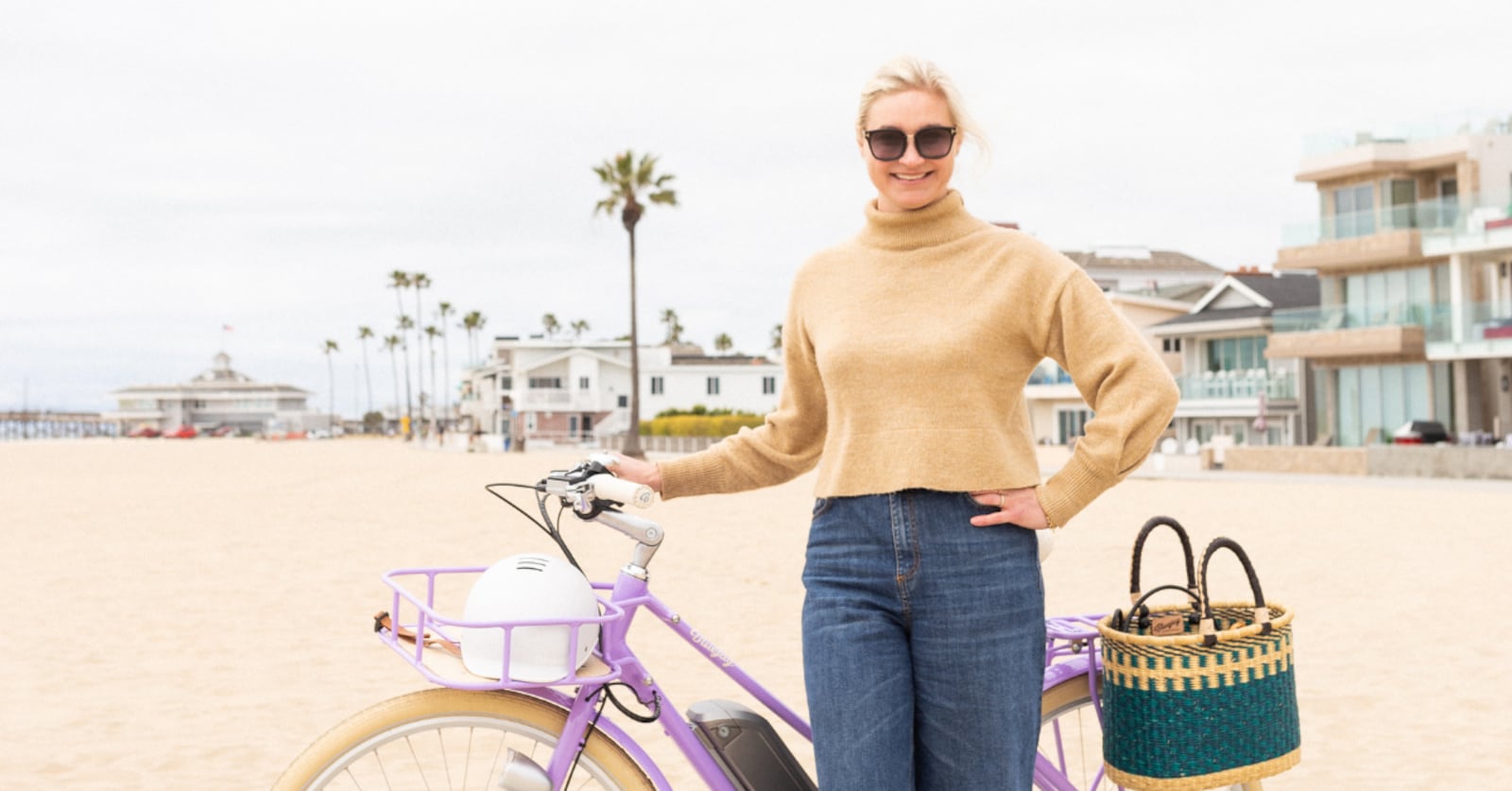The Founder Series is a column by and about Utah founders and how they got to where they are today. Click here to read past articles in the series.
Bluejay Electric Bikes is the culmination of a lot of experience, desire and resilience.
After spending my early career years consulting in biotech and healthcare, I realized I wanted to follow my true passion and go into retail instead. After business school, I went through Bloomingdale’s executive training program as a merchant and then left to build brands.
I then made a life decision to move from New York to San Francisco. I ended up at Sephora and worked my way up the senior ranks, traveling around the world and launching beauty brands. It was a very exciting time in my career, but there was a lot of pressure. Because of the way we were structured, we had multiple portfolios, and I was in charge of marketing and digital for all of them. I was missing out on time with my young family at home, and the years went by quickly. Time off was needed.
I was on the senior executive team at a group within the LVMH family — one of the largest luxury conglomerates in the world — when I felt ready to begin my ultimate career-long dream of starting my own company. While at Sephora, I gleaned a lot from the executives at LVMH about building a sustainable brand that could last 100 years or more. That’s an art they’ve perfected.
During my time there, we tapped into a social media marketing success formula that amplified the luxury branding experience. Combined with my product development and marketing skills, I just needed the right product to get behind — and while I was taking time off to focus on my family, I found exactly what I was looking for.
Switching gears
It was 2017. We’d moved to Marin County in the suburbs of the Bay Area. My main priorities were taking my children to school and meeting other moms. In the midst of that, I started seeing people on e-bikes, and it was a shock. I’d never seen anything like them before. San Francisco is so hilly; I had been riding up hills on a regular bike with my kids in tow, always walking the last of them rather embarrassingly. These people had kids on the backs of their e-bikes, cruising up and down hills with little to no effort.
This must have been a brand new invention, I thought, even revolutionary technology. But it had been around; it had already dominated the European market. Strangely, only a small percentage of e-bikes were being sold in the United States. While e-bikes made up 30-60 percent of the bike market in some countries, they only amounted to 2 percent in our own. What was wrong with this picture?
From a macro perspective, my business brain started to break it down. This was a tried-and-true technology that had taken off elsewhere. This was an early adoption, life cycle marketing problem where there was a chasm between early adopters and the early majority.
I thought to myself, e-bikes are going to be huge. It would take more time to grow the market here, but they made so much sense from a traffic perspective as a way to combat environmental concerns and parking problems. They solved so much, but the general consumer didn’t understand them entirely — at least not yet.

Research on wheels
The more I thought about it, the more it just made sense. E-bikes aligned with the younger generation’s values of not having to own a car. I already knew this customer — I’d been marketing to this exact person for a very long time. Even if they didn’t know it yet, e-bikes were perfect for them.
Avid cyclists were — and still very much are — their own community, and that’s who the bike industry had been focusing on. That’s also very different from the hobbyists and commuters I would be connecting to. Other brands had been focused on cyclists and little else for so long, but that was a much smaller portion of the market than the everyday consumer. They were thinking about high-end mountain bikes. I wanted to consider the consumer first, then bring them the best quality I could.
First, it meant learning a lot more. I visited my local bike shop, talked with mechanics and rode every electric bike I could try. I traveled to Eurobike, an international bicycle trade fair in Germany. I visited Copenhagen, a city known to be forward-thinking on e-bikes in urban settings. My research continued for a year, and I formulated all I had seen.
In Amsterdam, for example, I saw stylish-looking moms with kids and accessories riding e-bikes together. I could picture people I knew doing the same thing. What’s more, they would be so much happier on an e-bike than stuck in an SUV in traffic with their kids complaining.
When you’re on an e-bike, everything changes. Kids are locked in the moment. I knew there was an opportunity here — I just needed to figure out how to build the product and then make choices other bike companies hadn’t or wouldn’t.
Bluejay would be about easily riding up hills and looking very, very good while doing so.
The road less traveled
At the time, I felt that there were not enough female founders making waves in business, which compelled me to make good on what I started. I had an idea, a marketing plan and a customer base. I’d figure out everything else.
Before I started Bluejay, I was on an executive team of women, but the CEO of the world’s largest beauty company was — and still is — a man (Nicolas Hieronimus, L’Oréal). I thought, “Forget the glass ceiling. I’ll build my own building and make myself the CEO.” Even if I failed, I’d know I was trying to do something gutsy that I felt more women should go for. It wasn’t the practiced or safe route, but I had to try.
This is how I came from beauty — an industry of mainly women — to the bike industry, which is the opposite. While being an outsider can make things more difficult from the start, as time went on, it became clear that my instincts were right: Being an outsider is a clear asset.
Riding the wave
In 2018, I went to Taiwan three times. Many high-end bikes are made there, and the community is small and well-known to each other. At first, they were cautious about accepting our business but said they had the capacity to assist. Five years later, they’re firm believers.
Right before COVID-19 hit in 2019, I had my second batch of 300 e-bikes on their way. We’d received warnings about the pandemic but weren’t taking them seriously. Taiwan, on the other hand, was. They saw what was coming. When I tried to make another visit, they strongly advised against it, and I made a compromise.
“Let’s put the bikes on the water,” I said. “We need to get them here.” That was the right decision.
COVID caused me to sell through my inventory more quickly than I thought I would. I was worried about being able to sell one bike, and I sold out almost immediately and was trying to order more. Nobody could go anywhere during that time, so riding bikes became more interesting — even critical. COVID created a whiplash effect of bikes being in demand and then long lead times in the supply chain. That’s what the industry is working through currently, and we’re steering clear of that. Instead, we focus on limited edition colors, superior quality and the ability to customize to every customer’s unique lifestyle.
One positive aspect of building a business during the COVID era is that we can work remotely as a team from any location. This allowed my family to pursue a long-time dream of living full-time in Park City, Utah. I am so excited about the opportunity to grow the Bluejay business here, and so far, the reception in the community has been incredible.
The path to success
It definitely hasn’t been an easy path to get here. Today, we’re proud to create the most chic, safe and functional e-bikes on the market and enjoy a large celebrity following. We’re grateful to count Kourtney Kardashian, Gwyneth Paltrow, Chrissy Teigen, Melissa McCarthy, Jennifer Garner, Tommy Hilfiger and Maria Shriver as fans.
I hope I’m inspiring the next generation — like my daughter and son — to go out and start something, be a role model, take a new approach and not be afraid of being an outsider. I have people who used to work in the beauty industry working at Bluejay, and they are super passionate about our mission. You can take an outside perspective and apply it to anything. You can do something totally different and make it work. That’s what gets me excited, even on my hardest days.


